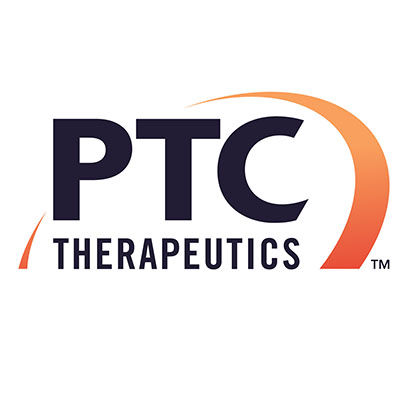预约演示
更新于:2025-05-07
AG-1031
更新于:2025-05-07
概要
基本信息
非在研机构- |
权益机构- |
最高研发阶段临床前 |
首次获批日期- |
最高研发阶段(中国)- |
特殊审评- |
关联
2
项与 AG-1031 相关的临床试验ChiCTR2300071526
A prospevtive clinical study of the prediction and early diagnosis for preeclampsia based on SIRT1
开始日期2023-06-01 |
申办/合作机构- |
NCT01158300
Phase I and Pharmacokinetic Trial of PTC299 in Pediatric Patients With Refractory or Recurrent CNS Tumors
RATIONALE: PTC299 may stop the growth of tumor cells by blocking blood flow to the tumor.
PURPOSE: This phase I trial is studying the side effects and the best dose of PTC299 in treating young patients with recurrent or refractory primary central nervous system tumors.
PURPOSE: This phase I trial is studying the side effects and the best dose of PTC299 in treating young patients with recurrent or refractory primary central nervous system tumors.
开始日期2010-11-01 |
申办/合作机构 |
100 项与 AG-1031 相关的临床结果
登录后查看更多信息
100 项与 AG-1031 相关的转化医学
登录后查看更多信息
100 项与 AG-1031 相关的专利(医药)
登录后查看更多信息
6
项与 AG-1031 相关的文献(医药)2020-11-01·Biotechnology Letters4区 · 工程技术
Effect of Ag-1031 on apoptosis in gastric cancer AGS cells and its effects on the PI3K/AKT/mTOR signaling pathway
4区 · 工程技术
Article
作者: Dai, Jianhua ; Liu, Danfeng ; Chen, Longjiang ; Sun, LiXia
2019-11-01·Journal of Cellular Biochemistry
The inhibition of BDNF/TrkB/PI3K/Akt signal mediated by AG1601 promotes apoptosis in malignant glioma
Article
作者: Ge, Hui ; Jiang, Yu ; Zhang, Yinguo ; Yang, Zhuo ; Yin, Hongqiang
2019-04-01·Molecular and Cellular Biochemistry3区 · 生物学
AG1031 induces apoptosis through suppressing SIRT1/p53 pathway in human neuroblastoma cells
3区 · 生物学
Article
作者: Fu, Jingxuan ; Zhang, Hui ; Zhang, Yuling ; Zhang, Tao
1
项与 AG-1031 相关的新闻(医药)2023-02-24
BLA supported by two pivotal trials demonstrating non-inferior vision gains to EYLEA® (aflibercept) Injection, with vast majority of patients maintaining extended dosing regimens through 48 weeks
If approved, 8 mg will be second ophthalmology medicine developed by Regeneron
Regeneron Pharmaceuticals, Inc. (NASDAQ: REGN) today announced that the U.S. Food and Drug Administration (FDA) has accepted for Priority Review the Biologics License Application (BLA) for aflibercept 8 mg for treatment of patients with wet age-related macular degeneration (wAMD), diabetic macular edema (DME) and diabetic retinopathy. The FDA target action date is June 27, 2023 following the use of a priority review voucher.
The BLA is supported by positive data from two pivotal trials – PULSAR in wAMD and PHOTON in DME – that were previously presented at the 55th Annual Scientific Session of The Retina Society in November 2022. In both trials, patients treated with aflibercept 8 mg (PULSAR n=673; PHOTON n=491) met the primary endpoint of non-inferiority in vision gains for both the 12- and 16-week dosing regimens after initial monthly doses at 48 weeks compared to patients treated with an EYLEA® (aflibercept) Injection (PULSAR n=336; PHOTON n=167) 8-week dosing regimen. Additionally, the vast majority of patients randomized to aflibercept 8 mg in both trials were able to maintain the 12- and 16-week dosing regimens to which they were respectively initiated through 48 weeks (wAMD: 79% and 77%; DME: 91% and 89%). The safety profile for aflibercept 8 mg was similar to EYLEA in both trials, and consistent with the known safety profile of EYLEA from previous clinical trials. Comparing aflibercept 8 mg to EYLEA, ocular adverse events occurred in 31% (n=491) versus 28% (n=167) in PHOTON and 38% (n=673) versus 39% (n=336) in PULSAR, and there were no cases of retinal vasculitis, occlusive retinitis or endophthalmitis in either trial.
Aflibercept 8 mg is being jointly developed by Regeneron and Bayer AG. In the U.S., Regeneron maintains exclusive rights to EYLEA and aflibercept 8 mg. Bayer has licensed the exclusive marketing rights outside of the U.S., where the companies share equally the profits from sales of EYLEA and future sales of aflibercept 8 mg following any regulatory approvals.
Aflibercept 8 mg is investigational, and its safety and efficacy have not been evaluated by any regulatory authority.
About the Aflibercept 8 mg Trial Program
PHOTON in DME and PULSAR in wAMD are double-masked, active-controlled pivotal trials that are being conducted in multiple centers globally. In both trials, patients were randomized into 3 treatment groups to receive either: aflibercept 8 mg every 12 weeks, aflibercept 8 mg every 16 weeks, or EYLEA every 8 weeks.
Patients treated with aflibercept 8 mg in both trials had 3 initial monthly doses, and patients treated with EYLEA received 5 initial monthly doses in PHOTON and 3 in PULSAR. In the first year, patients in the aflibercept 8 mg groups could have their dosing intervals shortened down to an every 8-week interval if protocol-defined criteria for disease progression were observed. Intervals could not be extended until the second year of the study, with those results still to be assessed. Patients in all EYLEA groups maintained a fixed 8-week dosing regimen throughout their participation in the trials.
The lead sponsors of the trials were Regeneron for PHOTON and Bayer for PULSAR.
About DME and wAMD
DME is a common complication in eyes of people living with diabetes. DME occurs when high levels of blood sugar lead to damaged blood vessels in the eye that leak fluid into the macula. This can lead to vision loss and, in some cases, blindness. Of the nearly 28 million American adults living with diabetes, an estimated 1.2 million have DME.
wAMD is a retinal disease that may affect people as they age. It occurs when abnormal blood vessels grow and leak fluid under the macula, the part of the eye responsible for sharp central vision and seeing fine detail. This fluid can damage and scar the macula, which can cause vision loss. An estimated 1.1 million Americans have wAMD, and this number is expected to double by 2050.
IMPORTANT EYLEA SAFETY INFORMATION AND INDICATIONS
INDICATIONS
EYLEA (aflibercept) Injection 2 mg (0.05 mL) is indicated for the treatment of patients with Neovascular (Wet) Age-related Macular Degeneration (AMD), Macular Edema following Retinal Vein Occlusion (RVO), Diabetic Macular Edema (DME), Diabetic Retinopathy (DR), and Retinopathy of Prematurity (ROP).
CONTRAINDICATIONS
EYLEA is contraindicated in patients with ocular or periocular infections, active intraocular inflammation, or known hypersensitivity to aflibercept or to any of the excipients in EYLEA.
WARNINGS AND PRECAUTIONS
Intravitreal injections, including those with EYLEA, have been associated with endophthalmitis and retinal detachments. Proper aseptic injection technique must always be used when administering EYLEA. Patients and/or caregivers should be instructed to report any signs and/or symptoms suggestive of endophthalmitis or retinal detachment without delay and should be managed appropriately. Intraocular inflammation has been reported with the use of EYLEA.
Acute increases in intraocular pressure have been seen within 60 minutes of intravitreal injection, including with EYLEA. Sustained increases in intraocular pressure have also been reported after repeated intravitreal dosing with VEGF inhibitors. Intraocular pressure and the perfusion of the optic nerve head should be monitored and managed appropriately.
In infants with ROP, reactivation of abnormal angiogenesis and tortuosity may occur following treatment with EYLEA. Infants should be monitored closely after injection with EYLEA until retinal vascularization has completed or until the examiner is assured that reactivation of ROP will not occur. Treatment with EYLEA will necessitate extended periods of ROP monitoring and additional EYLEA injections and/or laser treatments may be necessary.
There is a potential risk of arterial thromboembolic events (ATEs) following intravitreal use of VEGF inhibitors, including EYLEA. ATEs are defined as nonfatal stroke, nonfatal myocardial infarction, or vascular death (including deaths of unknown cause). The incidence of reported thromboembolic events in wet AMD studies during the first year was 1.8% (32 out of 1824) in the combined group of patients treated with EYLEA compared with 1.5% (9 out of 595) in patients treated with ranibizumab; through 96 weeks, the incidence was 3.3% (60 out of 1824) in the EYLEA group compared with 3.2% (19 out of 595) in the ranibizumab group. The incidence in the DME studies from baseline to week 52 was 3.3% (19 out of 578) in the combined group of patients treated with EYLEA compared with 2.8% (8 out of 287) in the control group; from baseline to week 100, the incidence was 6.4% (37 out of 578) in the combined group of patients treated with EYLEA compared with 4.2% (12 out of 287) in the control group. There were no reported thromboembolic events in the patients treated with EYLEA in the first six months of the RVO studies.
ADVERSE REACTIONS
Serious adverse reactions related to the injection procedure have occurred in The most common adverse reactions (≥5%) reported in patients receiving EYLEA were conjunctival hemorrhage, eye pain, cataract, vitreous detachment, vitreous floaters, and intraocular pressure increased.
In pre-term infants with ROP receiving EYLEA the most common adverse reactions (≥4%) reported were retinal detachment, conjunctival hemorrhage, and intraocular pressure increased. Adverse reactions established for adult indications are considered applicable to pre-term infants with ROP, though not all were observed in the clinical studies.
Patients may experience temporary visual disturbances after an intravitreal injection with EYLEA and the associated eye examinations. Advise patients not to drive or use machinery until visual function has recovered sufficiently.
For more information, please see full Prescribing Information.
About Regeneron
Regeneron (NASDAQ: REGN) is a leading biotechnology company that invents, develops and commercializes life-transforming medicines for people with serious diseases. Founded and led for 35 years by physician-scientists, our unique ability to repeatedly and consistently translate science into medicine has led to nine FDA-approved treatments and numerous product candidates in development, almost all of which were homegrown in our laboratories. Our medicines and pipeline are designed to help patients with eye diseases, allergic and inflammatory diseases, cancer, cardiovascular and metabolic diseases, pain, hematologic conditions, infectious diseases and rare diseases.
Regeneron is accelerating and improving the traditional drug development process through our proprietary VelociSuite® technologies, such as VelocImmune®, which uses unique genetically humanized mice to produce optimized fully human antibodies and bispecific antibodies, and through ambitious research initiatives such as the Regeneron Genetics Center®, which is conducting one of the largest genetics sequencing efforts in the world.
内容来源于网络,如有侵权,请联系删除。

临床结果优先审批
100 项与 AG-1031 相关的药物交易
登录后查看更多信息
研发状态
10 条进展最快的记录, 后查看更多信息
登录
| 适应症 | 最高研发状态 | 国家/地区 | 公司 | 日期 |
|---|---|---|---|---|
| 胶质瘤 | 临床前 | 美国 | - | |
| 神经母细胞瘤 | 临床前 | 美国 | - |
登录后查看更多信息
临床结果
临床结果
适应症
分期
评价
查看全部结果
| 研究 | 分期 | 人群特征 | 评价人数 | 分组 | 结果 | 评价 | 发布日期 |
|---|
No Data | |||||||
登录后查看更多信息
转化医学
使用我们的转化医学数据加速您的研究。
登录
或

药物交易
使用我们的药物交易数据加速您的研究。
登录
或

核心专利
使用我们的核心专利数据促进您的研究。
登录
或

临床分析
紧跟全球注册中心的最新临床试验。
登录
或

批准
利用最新的监管批准信息加速您的研究。
登录
或

特殊审评
只需点击几下即可了解关键药物信息。
登录
或

Eureka LS:
全新生物医药AI Agent 覆盖科研全链路,让突破性发现快人一步
立即开始免费试用!
智慧芽新药情报库是智慧芽专为生命科学人士构建的基于AI的创新药情报平台,助您全方位提升您的研发与决策效率。
立即开始数据试用!
智慧芽新药库数据也通过智慧芽数据服务平台,以API或者数据包形式对外开放,助您更加充分利用智慧芽新药情报信息。
生物序列数据库
生物药研发创新
免费使用
化学结构数据库
小分子化药研发创新
免费使用

